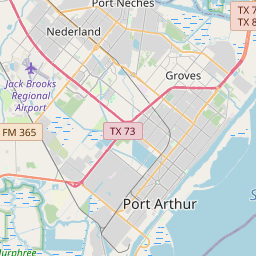First United Methodist Church of Port Neches






Before 1881 Methodists in Port Neches, then known as Grigsby's Bluff, were served by occasional circuit Riders who preached in private homes. On Sept. 6, 1881, the Rev. w. H. crawford conducted a meeting to organize the first local Methodist church which began with a membership of sixteen.
Worship services continued to be held in members' homes until 1885. In that year a house, damaged in the process of being moved, was repaired and given to the church for its use. there the community held school classes as well as worship services by the light of coal oil lamps. A new building was erected in 1894 which served as both church and school until 1911 when a separate schoolhouse was built. A growing membership soon created the need for a larger building. Money was raised, and a new church was built in 1919 on the corner of Main and Nall streets where the congregation worshiped for thirty years.
In 1920 the Rev. W. E. Hassler became the first full-time minister. During his pastorate, the church grew rapidly and a Vacation Bible School was started.
The sanctuary on this site was erected in 1950. A new wing and an education building were added in 1961. By 1981 membership had grown to number 1,100
As one of the most visible programs of the Texas Historical Commission (THC), historical markers commemorate diverse topics in Texas history, including: the history and architecture of houses, commercial and public buildings, religious congregations, and military sites; events that changed the course of local and state history; and individuals who have made lasting contributions to the state, community organizations, and businesses.
The Johnson Space Center, located in Houston, played a crucial role in the development of the U.S. space program. It was here that NASA trained its astronauts and mission control teams, and it continues to be an important center for space research and exploration today.
In the early 1820s, Empresario Joseph Vehlein obtained a contract to settle 300 families in the region. The land, once inhabited by the Atakapa people, soon attracted settlers of various origins, including Americans, Europeans, and enslaved Africans. The area became known for its fertile soil, offering ideal conditions for agriculture and ranching.
The city of Beaumont was established in the mid-19th century and quickly developed into a major trading and shipping center due to its access to the Neches River and the Gulf of Mexico. The discovery of oil at Spindletop in 1901 marked a turning point in the county's history, as the region experienced a significant oil boom. This brought great prosperity and transformed the area's economy, leading to the development of the petrochemical industry in the following decades.
Throughout the 20th century, Jefferson County witnessed various social and economic changes. It played a key role in World War II, serving as the location for significant military activity, including the establishment of one of the largest military shipbuilding centers in the country. The county also experienced desegregation struggles during the Civil Rights Movement in the 1950s and 1960s, which eventually led to greater equality.
Today, Jefferson County continues to be an important industrial center for petrochemicals and petroleum-related industries. It is also home to a diverse population and offers a mix of urban and rural landscapes, with a variety of cultural and recreational opportunities for residents and visitors.
Jefferson County Timeline
This timeline provides a glimpse into the major events and milestones that have shaped the history of Jefferson County, Texas.
- 1836: Jefferson County is established as a municipality of the Republic of Texas.
- 1838: The town of Beaumont is founded.
- 1840: Jefferson County becomes part of the newly-formed State of Texas.
- 1845: Texas is admitted to the United States, and Jefferson County becomes a county within the state.
- 1858: A railroad is completed, connecting Beaumont to surrounding areas.
- 1865: The Civil War ends, and Jefferson County begins to recover from the war's impact.
- 1881: The Spindletop oil field, the first major oil discovery in Texas, is found in Jefferson County.
- 1901: The Lucas Gusher at Spindletop oil field erupts, launching the Texas oil boom.
- 1925: The Neches River is first navigable by deep-draft vessels, boosting the county's shipping industry.
- 1943: The Port of Beaumont is established as a major center for the shipping and petrochemical industries.
- 1989: Hurricane Gilbert strikes Jefferson County, causing significant damage to the area.
- 2005: Hurricane Rita makes landfall in Jefferson County, leading to widespread devastation.
- 2017: Hurricane Harvey causes widespread flooding in Jefferson County.